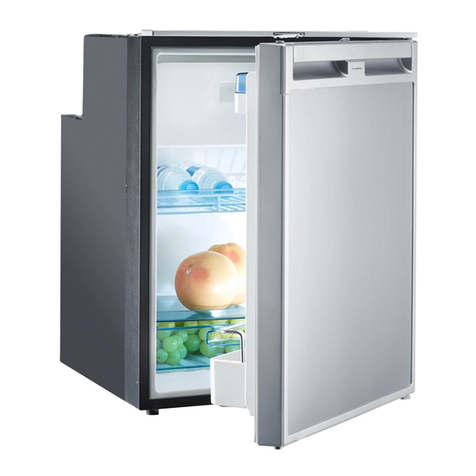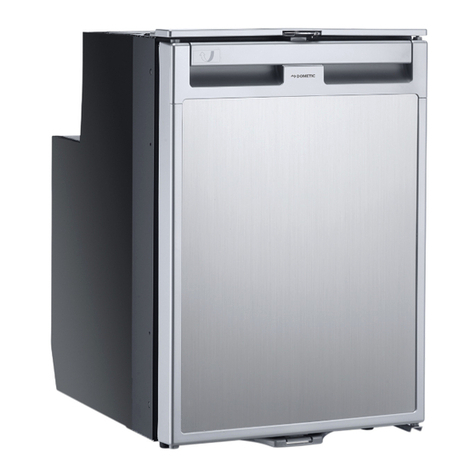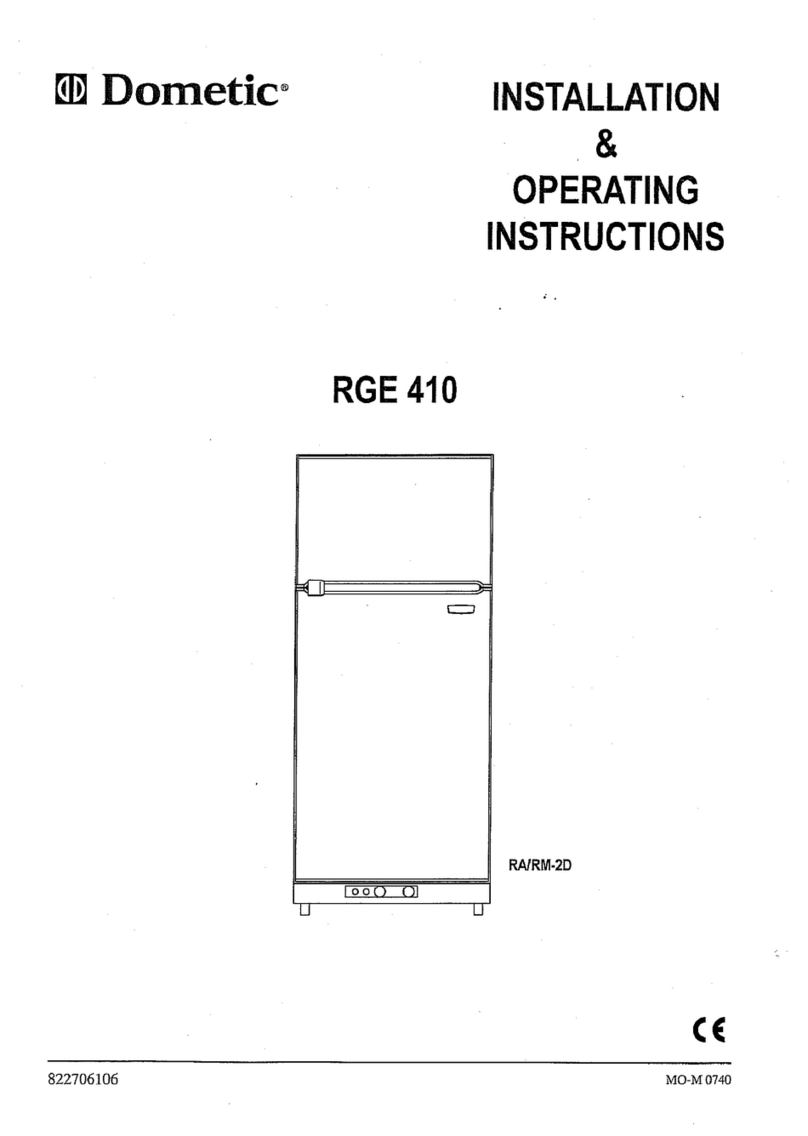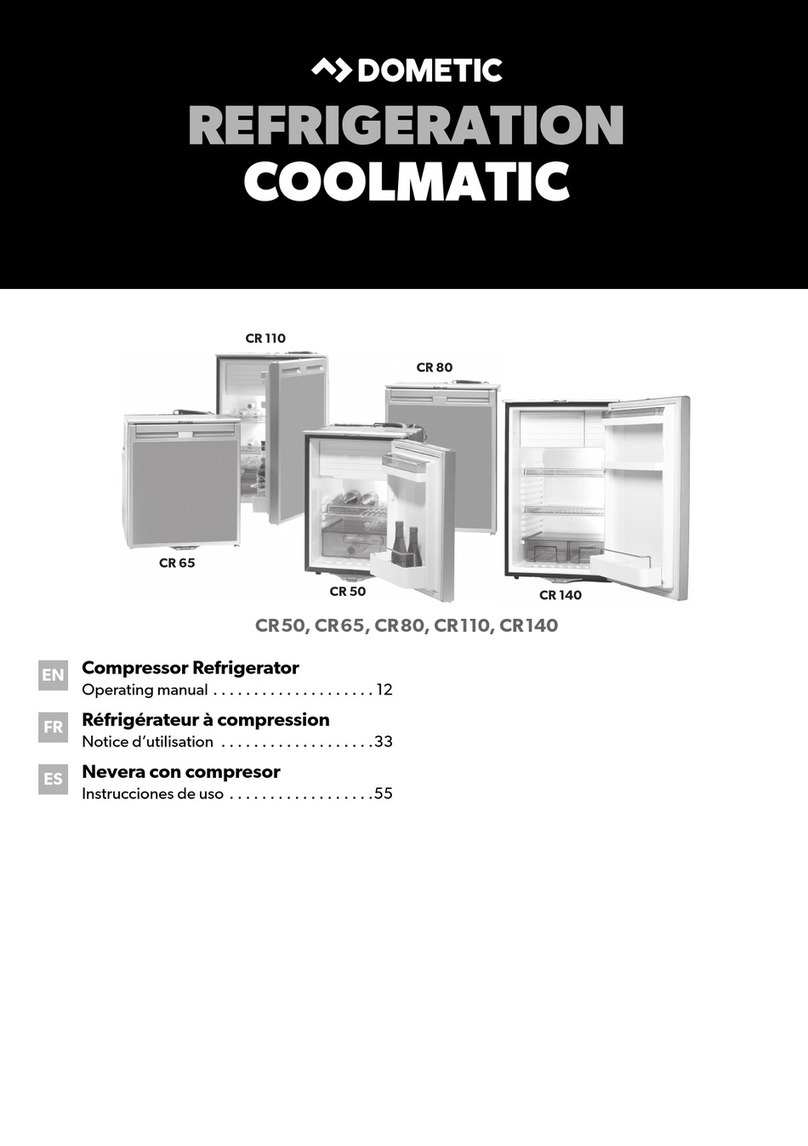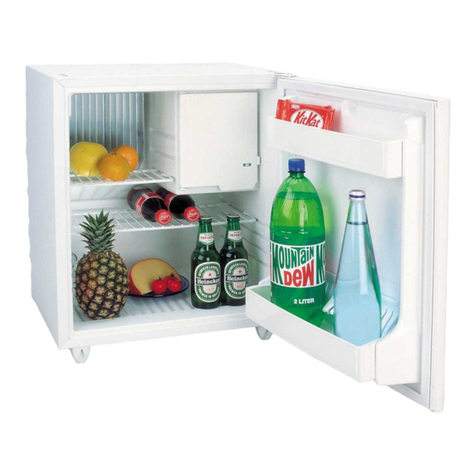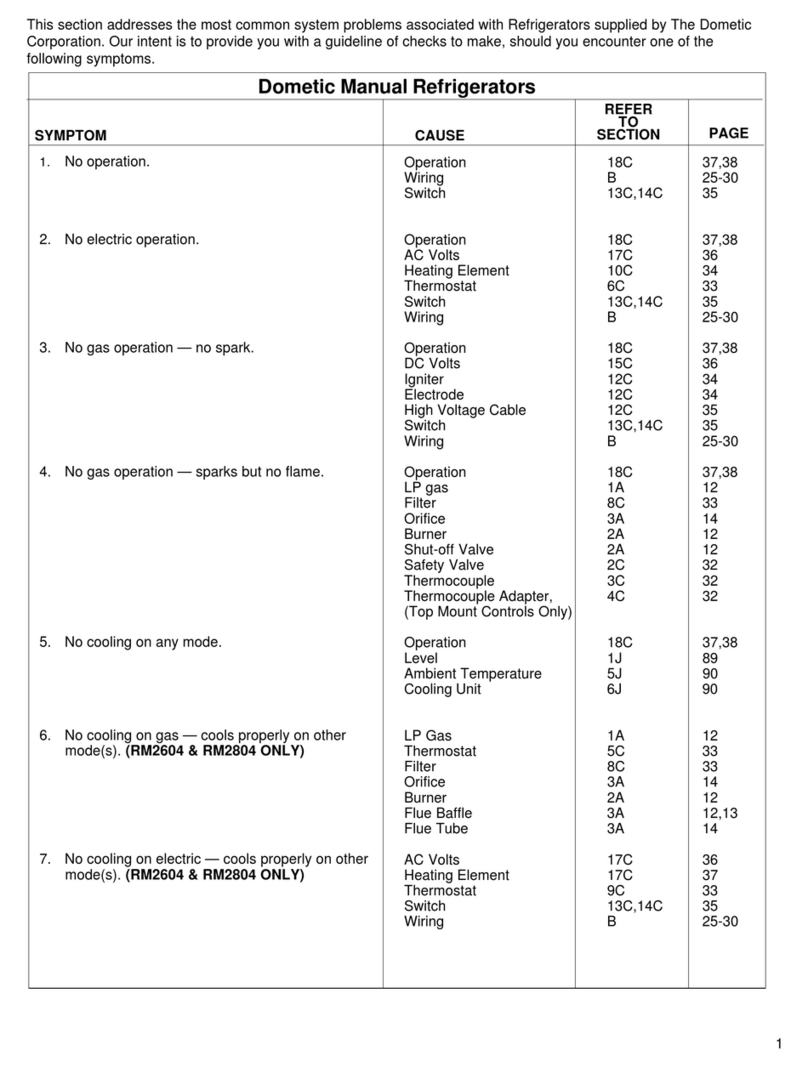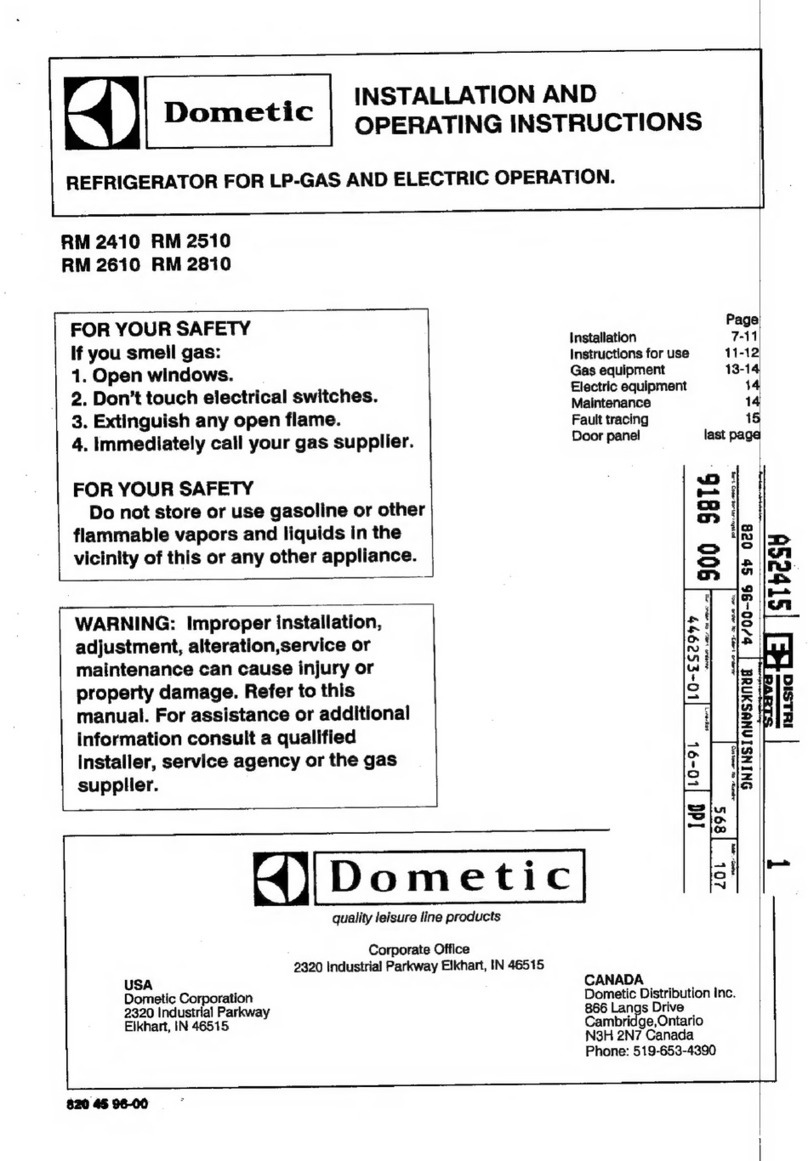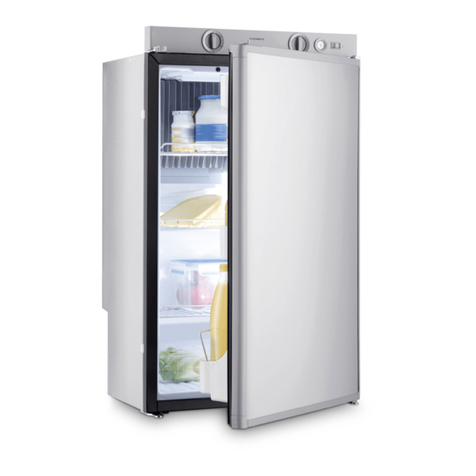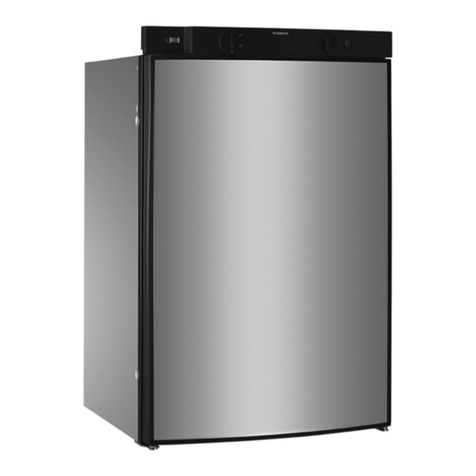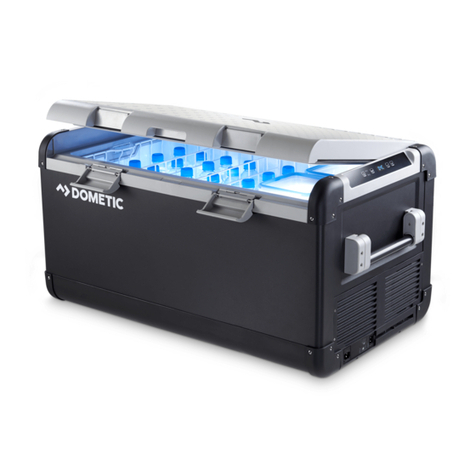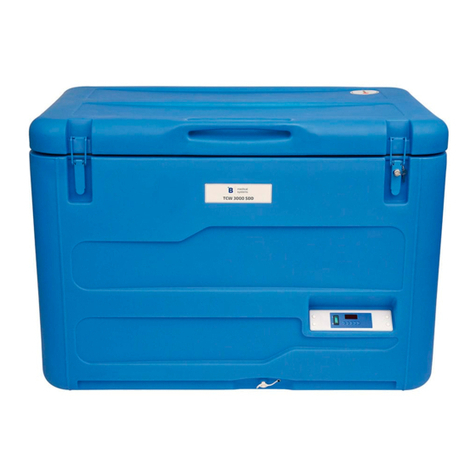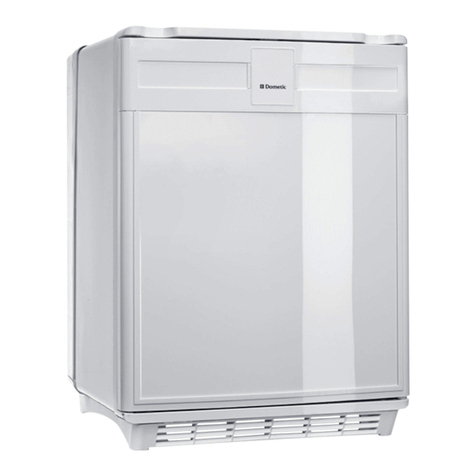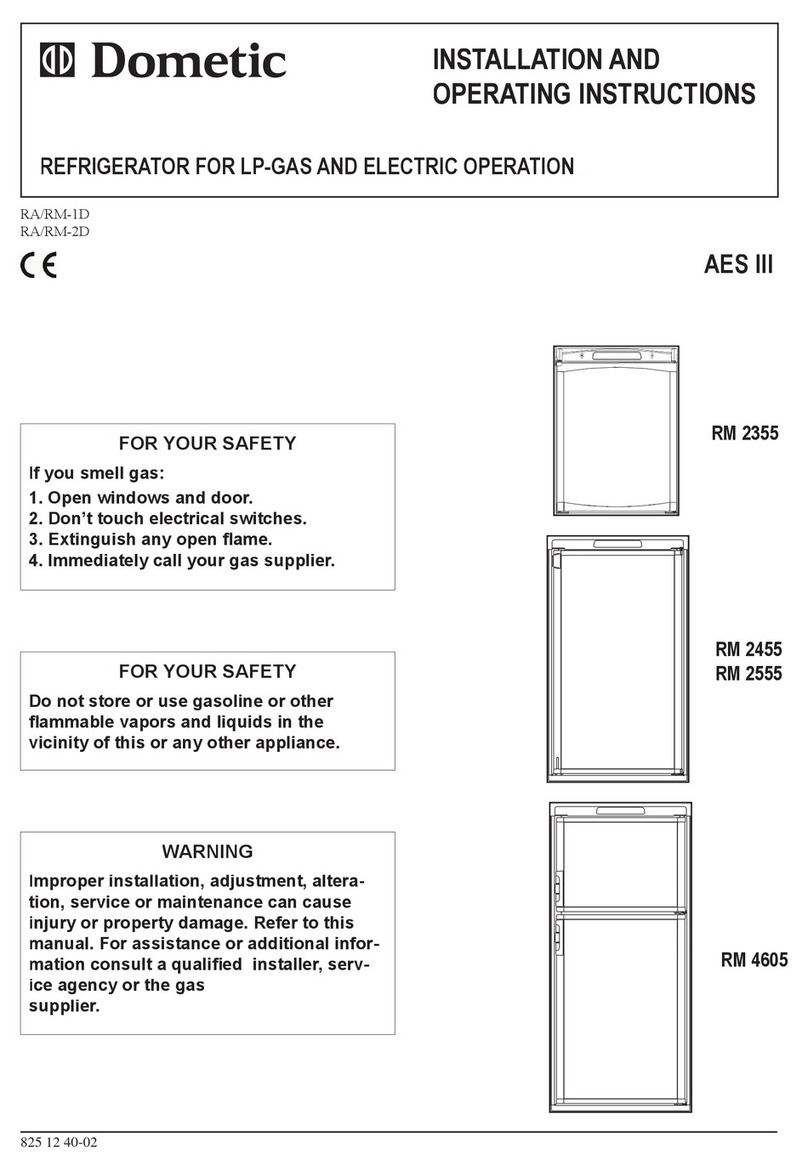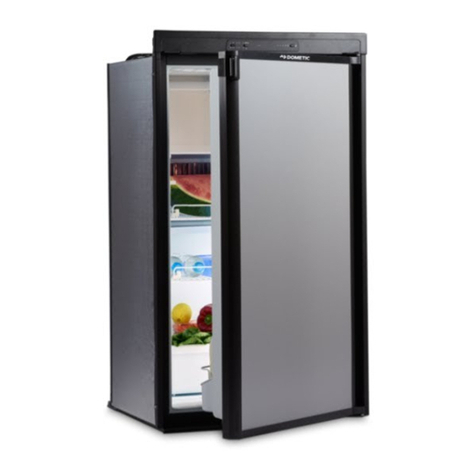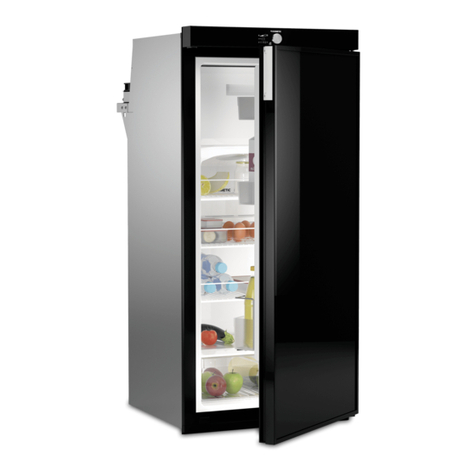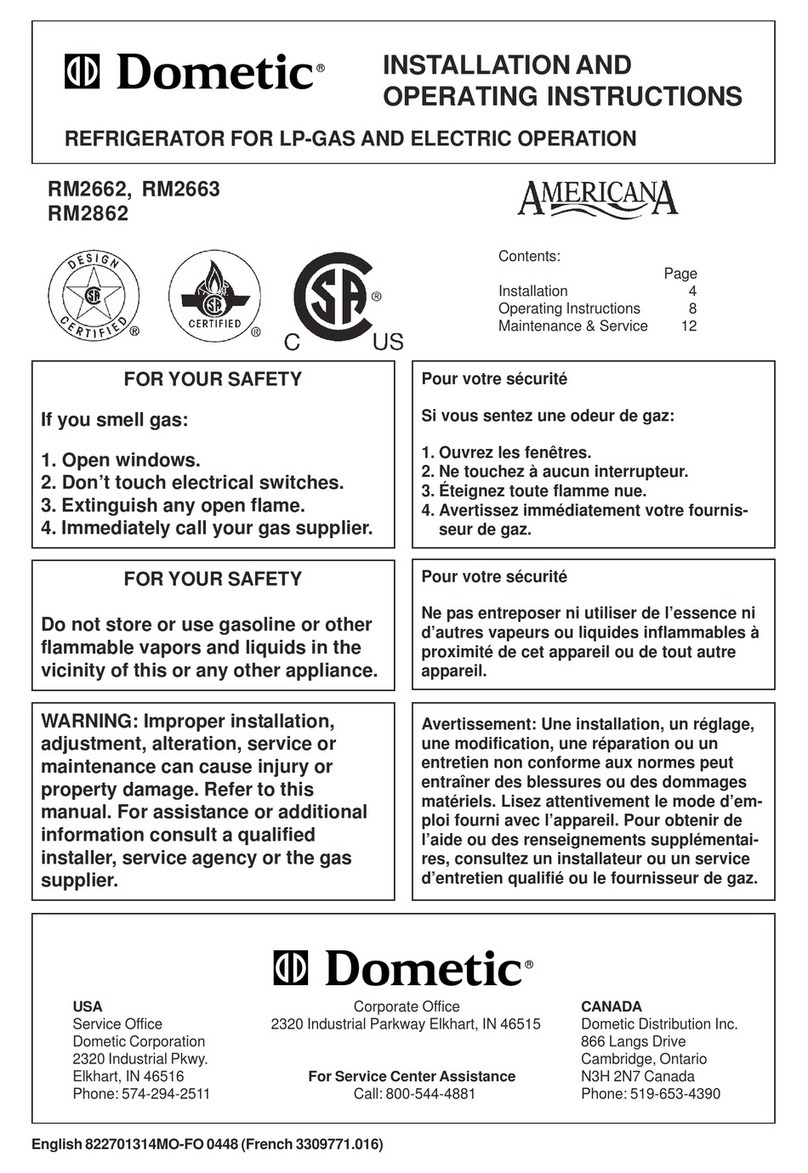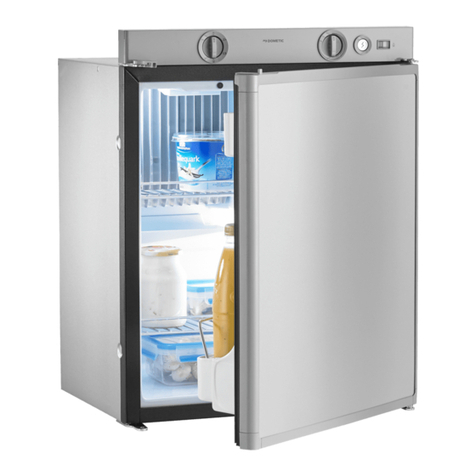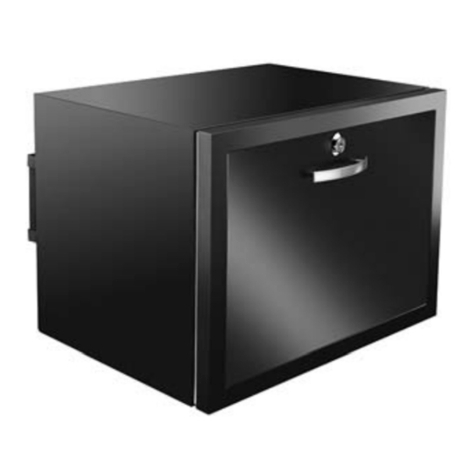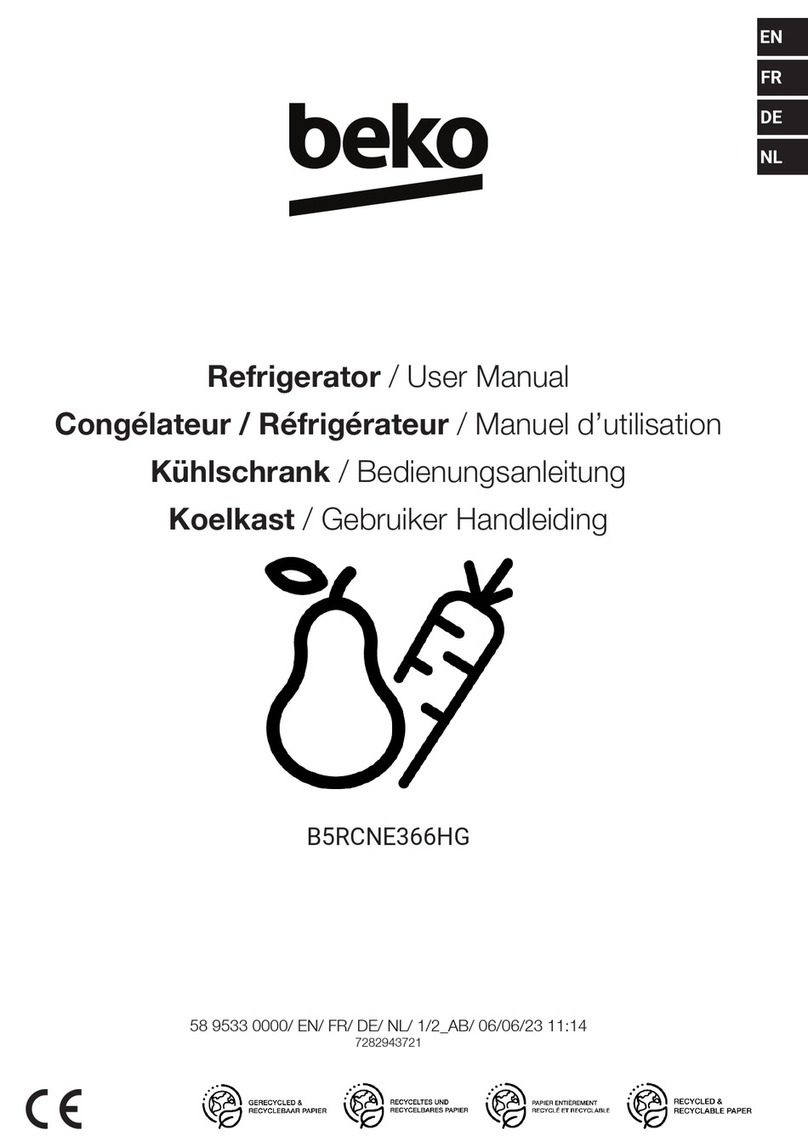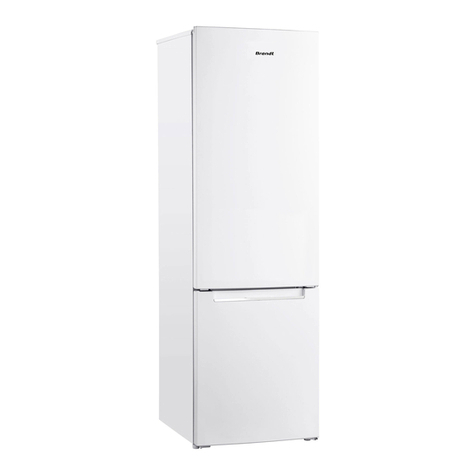
- 8 -
CONNECTIONS
GAS CONNECTION
Hook up to the gas supply line is accomplished at the manual
gas valve, which is furnished with a 3/8” SAE (UNF 5/8” -18)
male flare connection. All completed connections should be ex-
amined for leaks using a solution of liquid detergent and water.
The gas supply system must incorporate a pressure regulator
to maintain a supply pressure of not more than 11 inches water
column. When testing the gas supply system at test pressures:
• > 1/2 psi - the refrigerator and its individual shutoff valve
must be disconnected from the gas supply piping system.
•≤1/2 psi - the appliance must be isolated from the gas
supply piping system by closing its individual manual
shutoff valve.
If detailed instructions on the installation and connection to
the gas supply are required, please contact your dealer or
distributor.
TESTING LP GAS SAFETY SHUT OFF
The gas safety shut off must be tested after the refrigerator is
connected to LP gas supply.
To test the gas safety shut off, follow these steps:
1. Start the refrigerator and switch to GAS mode.
2. Check that the gas flame is lit and the GAS mode
indicator lamp is on.
3. Close the manual gas shutoff valve at the back of the
refrigerator, see “APPENDIX A - REARVIEW
EQUIPMENT”
4. Wait for approx. 45 seconds. The ignition attempt is
interrupted LP is displayed (flashing).
5. Remove the protection cover.
6. Open the manual gas shutoff valve. Do not change
any button positions on the control panel.
7. Apply a non-corrosive commercial bubble solution
to the burner jet orifice. No bubbles should appear at
the opening of the burner jet orifice. The presence of
bubbles indicates a defective gas safety shutoff, and
service is required.
8. If no bubbles were present at the burner jet orifice, it
should be rinsed with fresh water. Be careful not to
damage the burner jet orifice.
9. Put back the cover.
10. Press the ON/OFF button off and then back on. Nor-
mal operation of the burner should return.
11. Allow the burner to operate for a minimum of five
minutes.
ELECTRICAL CONNECTION
120V AC CONNECTION
The refrigerator is equipped with a grounded three-prong plug
for protection against shock hazards. It should be plugged
directly into a properly grounded three-prong receptacle. Do not
cut or remove the grounding prong from this plug!
The free length of the cord is 2 feet and therefore recommended
that the receptacle be located to the left side (opposite side of
refrigerator burner assembly) of the refrigerator (viewed from
the rear).
To allow easy access through the vent door,
place the receptacle 3” above the refrigera-
tor mounting floor. The cord should
be routed to avoid direct contact with the
burner cover, flue cover or any other compo-
nents that could damage the cord insulation.
INSTALLATION PROCEDURE
120V AC
receptacle
WARNING
EXPLOSION HAZARD. Never use an open ame
to check for gas leaks. Failure to heed this warn-
ing could cause an explosion resulting in death or
severe personal injury.
6
!
12V DC CONNECTION
The refrigerator requires a continuous 12V DC supply to main-
tain the automatic energy system. The connection is made to
the positive (+) and negative (-) terminals of the terminal block
on back of the refrigerator, see “APPENDIX A - REARVIEW
EQUIPMENT”.
Correct polarity must be observed when connecting to the DC
supply. Do not use the chassis or vehicle frame as one of the
conductors. Connect two wires at the refrigerator and route to
the DC supply. The connections must be clean, tight and free
from corrosion.
Ensure that the wires from the battery to the refrigerator are
able to handle the load. The distance the current must travel
from the battery to the refrigerator dictates the AWG wire size
to be used. Inadequate wire sizes can result in a voltage drop
which affects the refrigerator performance.
Recommended wire sizes are displayed in the following table:
CONDUCTOR WIRE LENGTH AND SIZE
WIRE LENGTH AWG
17 ft (5 m) 14
27 ft (8 m) 12
